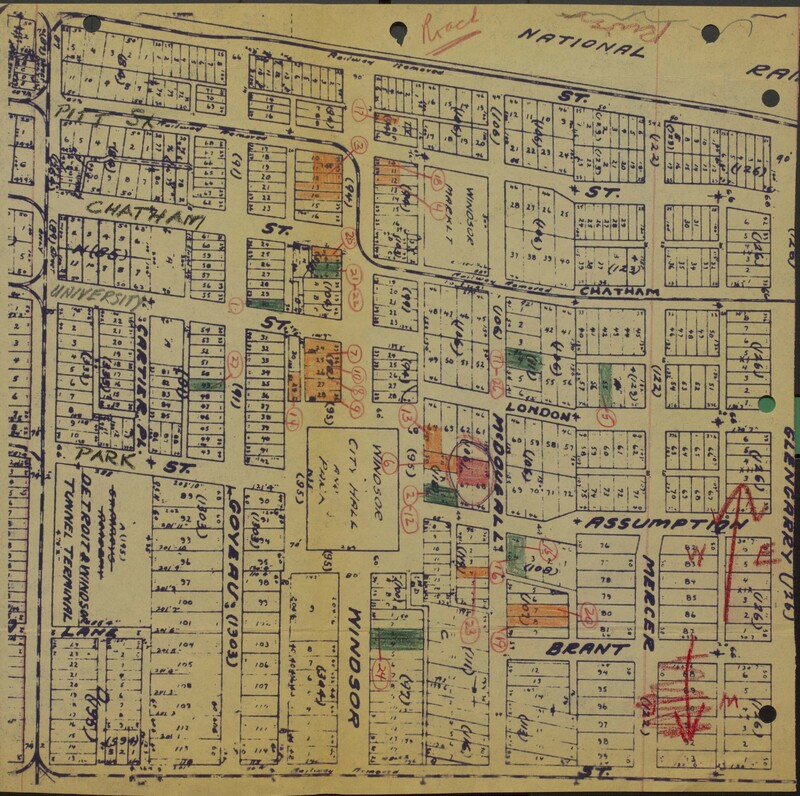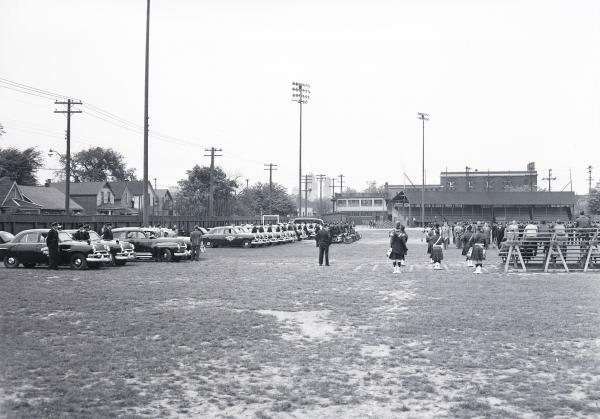Fred Thomas and The McDougall Street Neighbourhood
By Willow Key
Fred Thomas’ remarkable journey to becoming one of Canada’s greatest athletes is due in no small part to the vibrant Black community that shaped him. Born in Windsor, Ontario, Thomas was raised in the historic McDougall Street Corridor community, a neighbourhood founded by free and formerly enslaved African Americans in the mid-19th century. The McDougall Street Corridor was more than just a neighbourhood; it was a refuge which offered opportunity and encouraged empowerment for the Black Windsorites. Raised on McDougall Street, in the heart of the community, Thomas’ achievements are inseparably linked to the foundation and support of all the freedom seekers who came before him, their descendants, and the institutions and organizations they established.
The McDougall Street Corridor played a pivotal role in Fred Thomas' early development, not only as one of Canada’s greatest athletes but also as a beloved community member. This mostly self-sufficient African Canadian community, thriving despite pervasive discrimination, fostered a sense of pride, solidarity, and excellence in its members. In a society where Black Canadians were often relegated to the margins, the McDougall Street Corridor community created spaces for its residents to flourish through its many social organizations, religious and educational institutions, and businesses. The very structure of the neighborhood, with its network of extended families and local institutions, was critical in nurturing individuals like Fred Thomas. These spaces gave him the confidence and opportunities to excel, even in the face of the racial barriers that Black Canadians were constantly navigating.
One such institution was the historically Black Mercer Street School. Established in 1891 as one of the city’s first desegregated schools, the Mercer Street School was located in the heart of Windsor’s Black community and served generations of Black students from the area. It was here that Fred Thomas honed his athletic abilities, winning the Junior Boys 75-yard relay in 1934 and 1936, and the Junior Boy’s high jump in 1936. Institutions like Mercer Street School played a crucial role in offering students the opportunity to thrive in an atmosphere that embraced their identity and provided a sense of belonging.
Fred Thomas was shaped by the values of the McDougall Street Corridor community—tenacity, perseverance, and an unwavering belief in one's potential. These values, encouraged by local groups including the Central Citizens’ Association; Hour-a-Day Study Club; the Armstead Athletic Club; the Windsor Art and Literary Club; and the Pivots’ Club, fueled his early athletic career, as he joined the track, basketball, and football teams at J.C. Patterson Collegiate Institute and participated in local sports leagues. For a time, Thomas played for the Windsor Coloured Giants, a community league composed of men from the McDougall Street Corridor including Ronald Smith, owner and manager of the Walker House Hotel; L. O. Jenkins, pastor of the African Methodist Episcopal Church; Harry Morgan, foreman for the Department of Public Works; Cliff Walls, structural engineer; and Earl Walls, heavyweight boxing champion. His experiences in Windsor’s sporting circles laid the groundwork for his future successes, including attending Assumption College (now the University of Windsor) and leading his team to victory against the Harlem Globetrotters in 1945.
Beyond sports, the McDougall Street Corridor's historical significance extends to the broader narrative of Black Canadian resistance and resilience. The community was built by freedom seekers who escaped the horrors of slavery, and their descendants carried that legacy of survival and self-determination. Fred Thomas’ ability to break barriers—whether as one of Canada’s few Black fighter pilots in the Royal Canadian Air Force during World War II, as the first Black Canadian football player for the Toronto Argonauts, or as the first Black player in the professional baseball Eastern League—is reflective of this legacy.
Yet, even as Thomas achieved remarkable things, his career was hampered by the same racial discrimination that so many in his community faced. He was barred from joining the Detroit Baseball Federation in 1948 due to concerns over racial integration, and despite his undeniable talent, was left off Canada’s Olympic roster in 1952. Racial discrimination would also play a role in Thomas’ lack of recognition as barrier-breaker and one of Canada’s greatest multi-sport athletes. The McDougall Street Corridor provided Thomas with the strength to persevere through these challenges. His experiences with discrimination only deepened his commitment to his roots, and he went on to teach and coach students in Toronto, giving back to the next generation just as his community had given to him.
Fred Thomas’ legacy is a reminder that individual success is rarely achieved in isolation. The McDougall Street Corridor, with its vibrant Black community, served as the foundation for his growth and success. The support, pride, and resilience of this historic neighborhood were instrumental in shaping not only Thomas’, but many other Black Windsorites who sought to overcome barriers and build a brighter future for their community.
After Thomas' passing in 1981, Glengarry Court Park—located in the northern section of the former McDougall Street Corridor having been reshaped by postwar urban renewal—was renamed Fred Thomas Park in his honour.


